Kids Web Japan
Web Japan > Kids Web Japan > Meet the Kids > Japanese Dance > Gestures
Meet the Kids
Japanese Dance
Gestures
Japanese dance has a number of basic gestures and rules for using the props. These movements are combined to express emotions, such as sadness and joy, or create a stage setting, such as the din and bustle of a festival. The following are some of the typical moves used in the Kawafuji school.
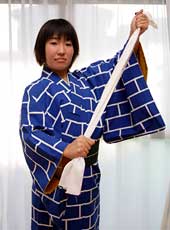
Expressing an oar
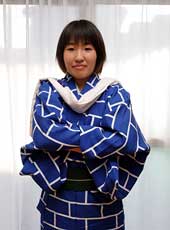
Oiwake
The oar of a boat, or sao, is portrayed with a towel. The towel is held tight between the dancer's hands and is pulled back and forth in a rowing action.
The image of a casually dressed dandy is conveyed in a step called oiwake, in which a towel that is draped across the front of the neck is tossed over the right and left shoulders.
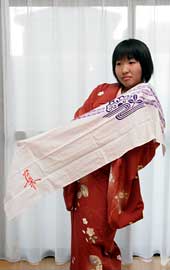
Kasuminagashi
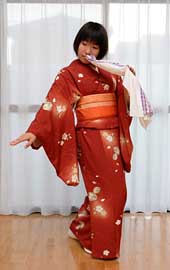
Matsubanagashi
Kasuminagashi is a step used in dances for women that paints an elegant picture of mist gracefully floating by. The towel is spread out between the dancer's hands in an action indicating the passage of mist in the scene.
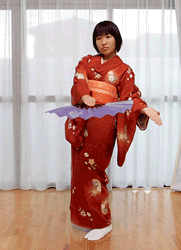
Awasegaeshi
Matsubanagashi is an expression of sadness and anger at not being able to get one's way. The towel is clenched between the dancer's teeth and held by the left hand while the right hand slides down.
Fans are also used to represent various ideas and objects. When closed, a fan can become a writing brush or flute, and when wide open it can depict waves or the wind. Awasegaeshi is a spectacular step in dances for women in which the dancer aligns her left hand with her right, which is holding a fan and pointing away from her body, and then swings both hands in front of her in a figure of eight.